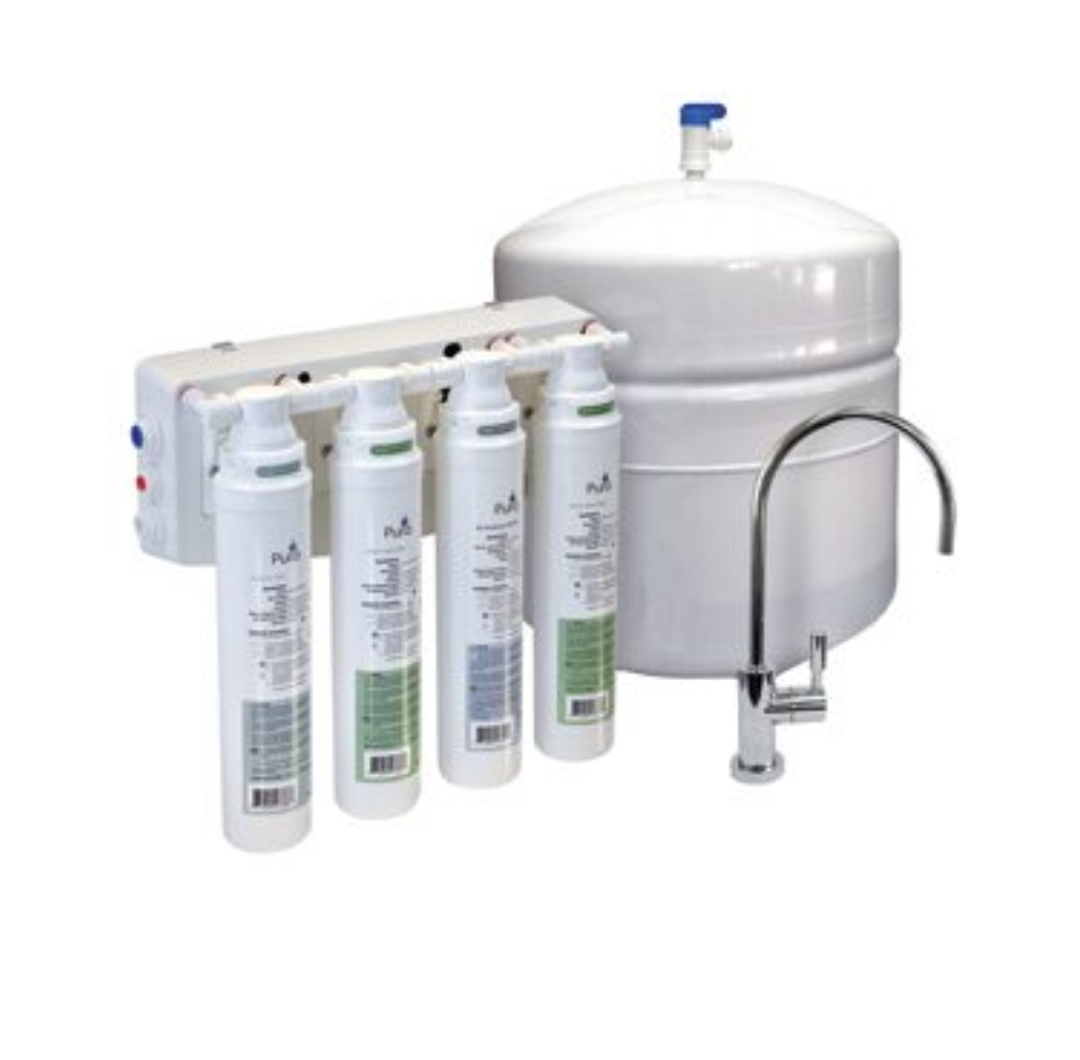In the pursuit of clean, purified water for our homes, whole-home reverse osmosis (RO) systems stand out as a comprehensive solution. As concerns about water quality and safety continue to grow, homeowners are increasingly turning to advanced filtration technologies to ensure the health and well-being of their families.
Whole-home reverse osmosis systems offer an effective way to remove contaminants, improve taste, and provide peace of mind throughout every faucet in your house.
In this comprehensive guide, we will delve into the intricacies of a whole home reverse osmosis system, exploring their benefits, components, installation process, maintenance requirements, and factors to consider when choosing the right design for your home.
Understanding Whole-Home Reverse Osmosis Systems
A whole home reverse osmosis system is a sophisticated water filtration system designed to treat all the water entering your home. Unlike point-of-use systems that only filter water at specific faucets or appliances, whole-home RO systems ensure that every drop of water used in your household undergoes purification.
Here are the key points to understand about these systems:
- Advanced Filtration Process: Whole-home RO systems utilise a multi-stage filtration process, including reverse osmosis membranes, activated carbon filters, and sediment filters, to remove impurities and contaminants from water.
- Comprehensive Water Treatment: These systems effectively eliminate a wide range of contaminants, including chlorine, fluoride, lead, arsenic, bacteria, viruses, and pharmaceutical residues, ensuring the highest level of water purity.
- Improved Water Quality: By removing contaminants and impurities, whole-home RO systems enhance the taste, odour, and clarity of water, providing clean and refreshing water for drinking, cooking, bathing, and other household activities.
- Health Benefits: Access to clean, purified water throughout your home can have numerous health benefits, including better hydration, reduced exposure to harmful chemicals, and improved skin and hair health.
- Environmental Impact: While whole-home RO systems offer unparalleled water purification, they also produce wastewater during the filtration process. However, advancements in technology have led to the development of more efficient systems that minimise water waste.
Components of Whole-Home Reverse Osmosis Systems
A whole-home reverse osmosis system consists of several essential components working together to ensure effective water purification. Understanding these components is crucial for selecting the right system for your home.
Here are the key components:
- Reverse Osmosis Membrane: At the heart of the system is the reverse osmosis membrane, a semipermeable membrane that removes contaminants, particles, and dissolved solids from water, allowing only pure water molecules to pass through.
- Pre-Filters: Pre-filters, including sediment filters and carbon filters, are installed to remove larger particles, sediment, chlorine, and other chemicals that can damage the reverse osmosis membrane or affect water taste and quality.
- Post-Filters: Post-filters, such as carbon filters or remineralisation filters, are used to enhance water taste further, remove any remaining contaminants, and add beneficial minerals back into the purified water.
- Storage Tank: A storage tank holds the purified water until it is needed, ensuring a constant supply of clean water throughout your home. The size of the tank may vary depending on household water usage and system specifications.
- Faucets and Dispensers: Whole-home RO systems typically include dedicated faucets or dispensers installed at kitchen sinks, bathroom sinks, and other points of use, providing convenient access to purified water for drinking and cooking.
Installation Process And Considerations
Embarking on the installation journey of a whole-home reverse osmosis system entails a meticulous approach guided by a blend of expertise and foresight.
Collaborating with water treatment specialists or seasoned plumbers is the initial step, as their insights can illuminate the path towards tailored solutions that harmonise with your home’s unique characteristics. Plumbing modifications may be necessary, necessitating a delicate balance between retrofitting existing infrastructure and seamlessly integrating the new system.
Careful consideration of system placement is paramount, with factors such as proximity to the main water supply line and accessibility for maintenance dictating the optimal location. Entrusting the installation to seasoned professionals ensures precision in every detail, from plumbing connections to system calibration, guaranteeing optimal performance from the outset.
Yet, the journey does not end with installation; it merely heralds the beginning of a new chapter in water purification. Regular maintenance emerges as the cornerstone of longevity, encompassing tasks such as filter replacement, system sanitation, and vigilant monitoring of water quality to safeguard the integrity of the system and the purity of the water it delivers.
Benefits Of Whole-Home Reverse Osmosis Systems
Investing in a whole-home reverse osmosis system offers a multitude of benefits for homeowners seeking clean, purified water for their families.
Here are the compelling benefits to consider installing a whole-home RO system:
- Comprehensive Filtration: Whole-home RO systems provide comprehensive filtration, removing contaminants, chemicals, and impurities from all the water entering your home, ensuring safe and clean water for drinking, cooking, bathing, and other household uses.
- Improved Water Taste and Quality: By removing chlorine, fluoride, and other chemicals, whole-home RO systems enhance the taste, odour, and clarity of water, providing refreshing and enjoyable drinking water straight from the tap.
- Healthier Lifestyle: Access to clean, purified water throughout your home promotes a healthier lifestyle by reducing exposure to harmful contaminants, supporting hydration, and improving overall well-being for you and your family.
- Protection for Appliances: Whole-home RO systems help protect household appliances, such as water heaters, dishwashers, and washing machines, from damage caused by sediment, mineral deposits, and other contaminants in untreated water.
- Environmental Sustainability: While whole-home RO systems require electricity to operate and produce wastewater during the filtration process, they can be more environmentally sustainable than relying on single-use plastic water bottles or inefficient filtration methods.
Conclusion
Whole-home reverse osmosis systems offer a comprehensive solution for ensuring clean, purified water throughout your home. By understanding the components, installation process, and benefits of whole-home RO systems, you can make an informed decision to enhance the quality of water in your home and improve the well-being of your family.

















Leave a comment